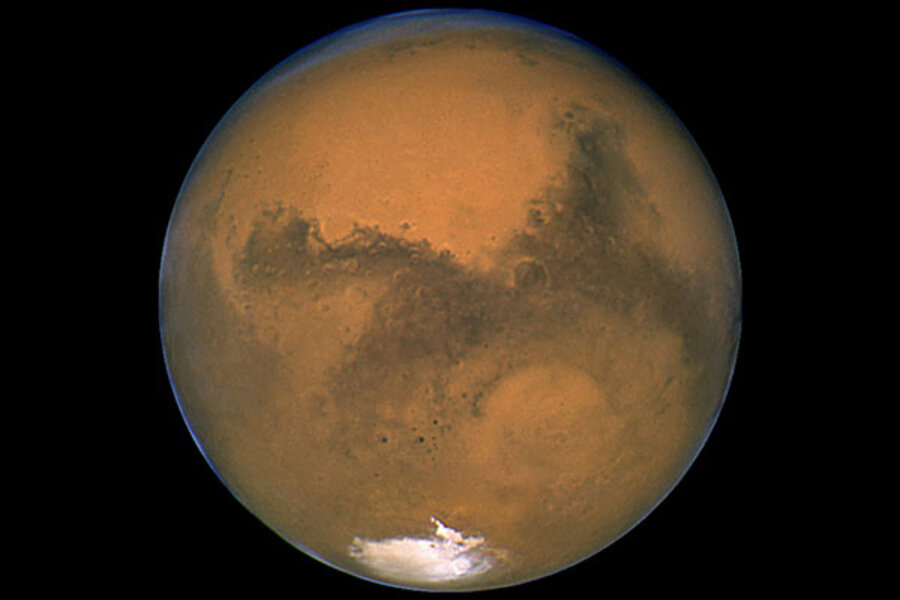Is NASA focusing too much on Mars?
Loading...
NASA unveiled plans this week for a brand-new mission to Mars in 2016, even as its newest rover was just settling in on the Red Planet. But space agency officials say it's not a case of Red Planet favoritism.
On Monday (Aug. 20), NASA announced that its next low-budget exploration effort will launch a lander called InSight to Mars in 2016 to investigate the Red Planet's interior. InSight's selection comes barely two weeks after the agency's $2.5 billion Curiosity rover touched down inside Mars' huge Gale Crater.
NASA's golf-cart-size Opportunity rover is still cruising around the Red Planet more than eight years after it landed with its twin, Spirit. And the space agency has two orbiters — Mars Odyssey and the Mars Reconnaissance Orbiter — actively observing the planet from above.
No other planet has received nearly this much attention in recent years. But NASA isn't too narrowly focused, officials said.
"We still have an extremely broad portfolio of missions, you know, heading out into the solar system now — for instance, Juno on its way to Jupiter, Osiris-Rex being worked in preparation for its mission to an asteroid," John Grunsfeld, associate administrator for NASA's Science Mission Directorate, told reporters Monday. "And so I think we've shown very broad diversity in past selections."
Grunsfeld also cited the Dawn probe — which has been studying the huge asteroid Vesta for the past year and is getting set to depart for the dwarf planet Ceres next month — and New Horizons, which is speeding toward a flyby of Pluto in 2015. [Quiz: How Well Do You Know Mars?]
Going back to Mars
InSight — short for Interior exploration using Seismic Investigations, Geodesy and Heat Transport — will be NASA's 12th Discovery-class mission, and its cost is capped at $425 million in 2010 dollars (excluding the launch vehicle).
The mission will put a lander on Mars in September 2016 to determine its rotation axis precisely and measure the seismic waves and heat coursing through the planet's interior. The main goal is to help scientists understand why Mars went down such a different evolutionary path than Earth did.
"This is a well-focused science objective," said Jim Green, director of NASA's Planetary Science Division. "It's really all about understanding the formation and evolution of our terrestrial planets."
InSight beat out two other finalists. Comet Hopper would have landed on a comet multiple times to study how the body changed on its journey around the sun. And the Titan Mare Explorer, or TiME, would have dropped a probe onto the hydrocarbon seas of Saturn's huge moon Titan, providing the first direct exploration of an ocean beyond Earth.
All three missions had great scientific promise, Grunsfeld said. In the end, he added, InSight won out largely for financial and logistical reasons, not because of any Mars bias.
InSight builds on the heritage of NASA's Phoenix lander, which confirmed the presence of water ice near Mars' north pole in 2008. And two of InSight's science instruments are provided by the French and German space agencies, respectively.
These features helped convince NASA that InSight had the greatest potential to stay under budget and on schedule — a key priority for the space agency, which saw its planetary science funding cut by 20 percent in the White House's proposed 2013 federal budget.
"I don't think I need to tell you that in the current fiscal environment that's really a very important element, all other things being equal, as they were," Grunsfeld said. [7 Biggest Mysteries of Mars]
Saving the Mars program?
Much of the money cut from NASA's planetary science efforts in the 2013 budget request is slated to come out of the Mars program. As a result, NASA bowed out of the European-led ExoMars mission — which aims to send an orbiter and a rover to the Red Planet in 2016 and 2018, respectively — and began downscaling its Mars exploration plans.
The selection of InSight could provide a huge shot in the arm to the agency's Mars program, some experts say.
"This is a major victory for Mars exploration," Robert Zubrin, director of the Mars Society, wrote in a blog post Tuesday (Aug. 21). "Not only is InSight an excellent mission that will teach us much about the history and internal structure of the Red Planet, it saves the Mars exploration program."
Other observers viewed InSight's selection as bittersweet, lamenting the fact that NASA cannot afford to fly all three finalist missions.
"There didn’t need to be two teams of disappointed scientists today," Casey Dreier, technology and outreach strategist at The Planetary Society, wrote in a blog post Monday. "There could have been three teams celebrating the future of exploration and incredible science. It could have been Mars, Titan, and a comet."
"We as a nation could have been celebrating our ability to pursue the most exciting science in every corner of our solar system," Dreier added in his post, which urged readers to push their elected representatives to increase NASA's planetary science funding. "What a wild and heady time it could’ve been."
Follow SPACE.com senior writer Mike Wall on Twitter @michaeldwall or SPACE.com @Spacedotcom. We're also on Facebook and Google+.
- The Boldest Mars Missions in History
- NASA Reveals Next Mars Landing Mission | Video
- Planetary Science Takes a Hit in 2013 (Infographic)
Copyright 2012 SPACE.com, a TechMediaNetwork company. All rights reserved. This material may not be published, broadcast, rewritten or redistributed.





